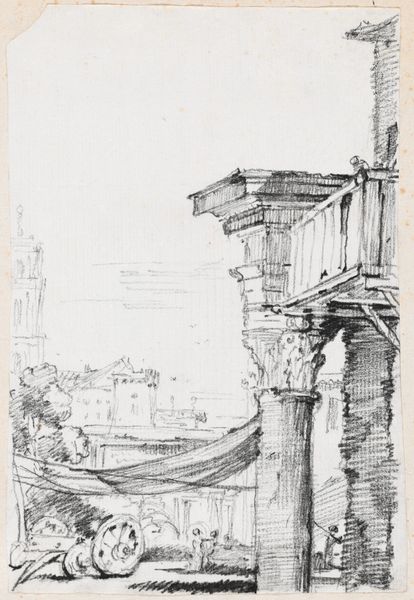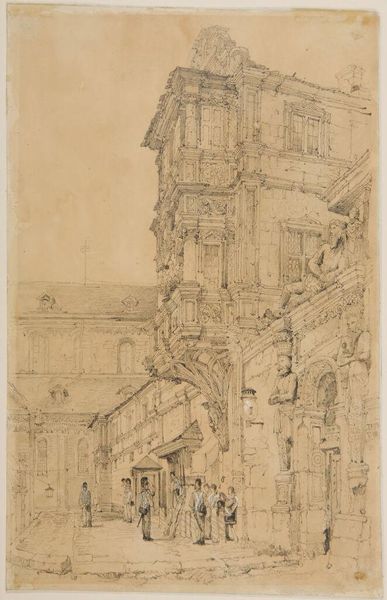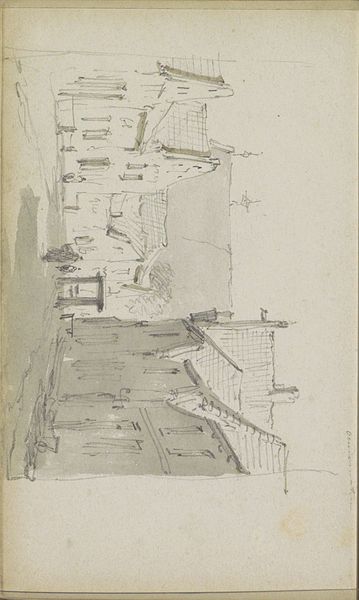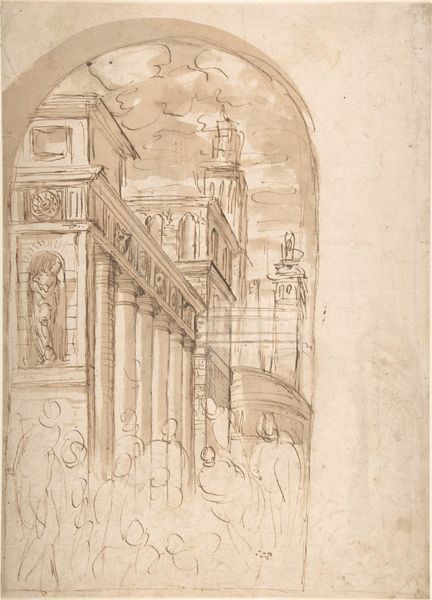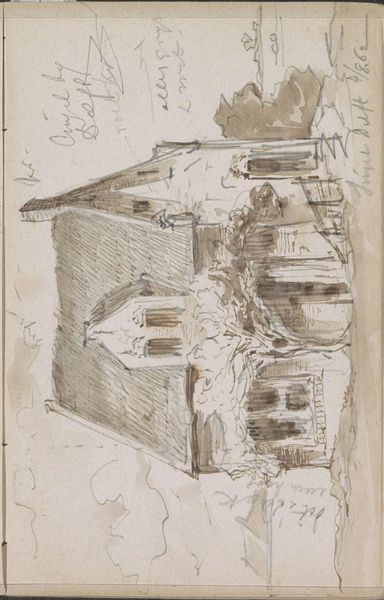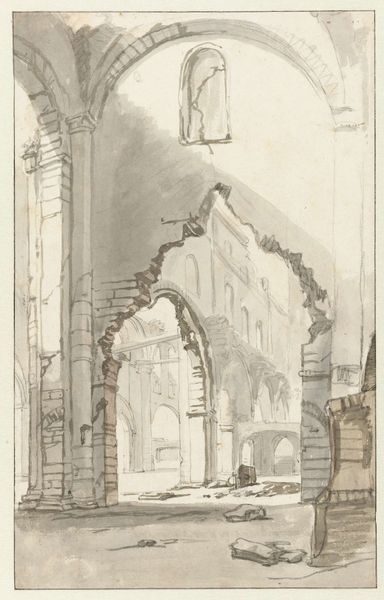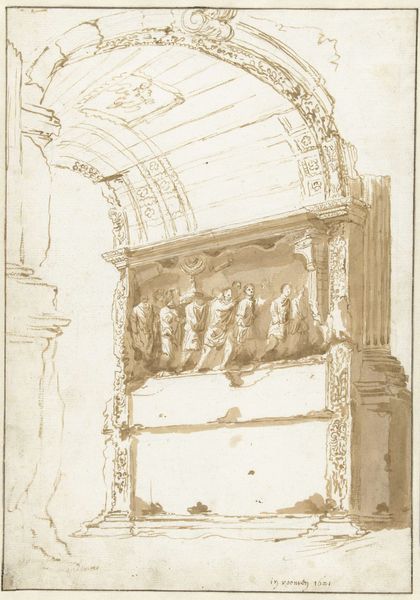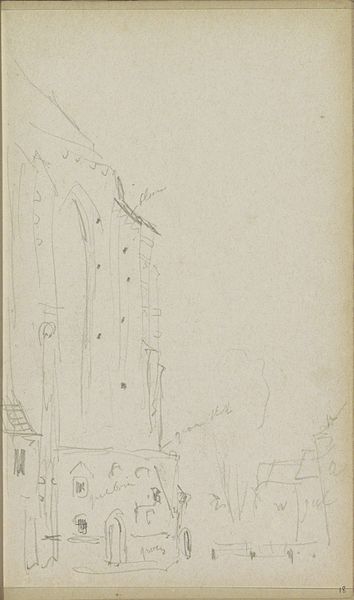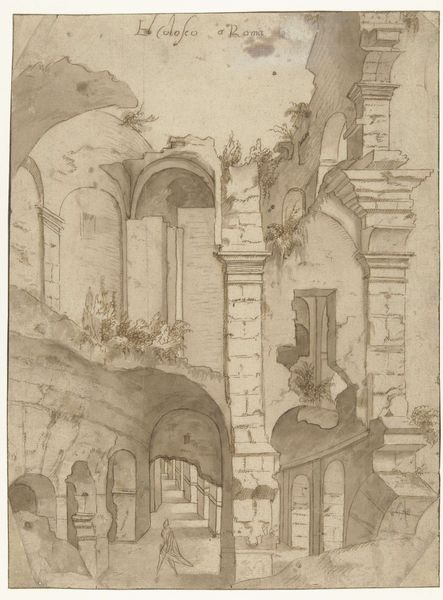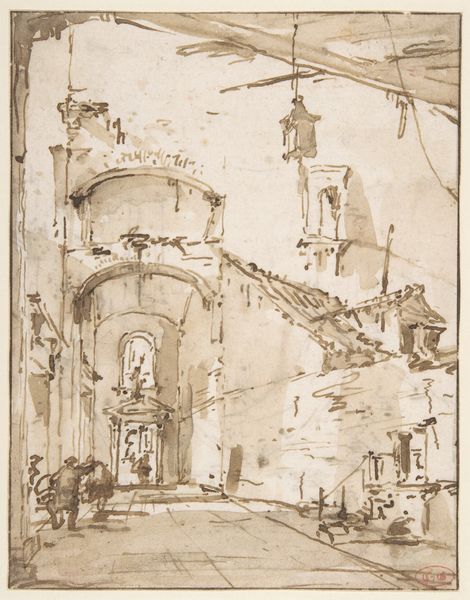
drawing, pencil
#
drawing
#
amateur sketch
#
aged paper
#
toned paper
#
light pencil work
#
dutch-golden-age
#
pencil sketch
#
sketch book
#
landscape
#
perspective
#
form
#
personal sketchbook
#
pen-ink sketch
#
pencil
#
line
#
sketchbook drawing
#
cityscape
#
sketchbook art
#
realism
Dimensions: height 261 mm, width 177 mm
Copyright: Rijks Museum: Open Domain
Editor: This is "Stairs of the Sint-Elisabeth Gasthuis in Amsterdam," a pencil drawing from around 1650-1652 by Roelant Roghman. The sketch-like quality really strikes me. What can you tell me about its place within the artistic context of the time? Curator: It's a fascinating piece because it reflects the Dutch Golden Age's interest in both realism and civic life. Roghman's choice to depict a hospital staircase, a public space, elevates the everyday. How does it challenge or conform to our ideas about Dutch landscape art? Editor: I guess I expected grander landscapes from that period. This feels more intimate, like a personal study. Curator: Exactly! And that's where the socio-political aspect comes in. During this era, there was a burgeoning sense of civic pride and philanthropy in the Netherlands. Depicting hospitals wasn't just about documenting architecture; it was subtly promoting the importance of public welfare. Do you think Roghman intended it for public display, or for a more private audience? Editor: Considering its sketchy nature, it was perhaps intended more as a preparatory drawing? Curator: Precisely. Its historical value now lies in what it reveals about Dutch society. Art wasn't just for the elite; it was starting to reflect the lives of ordinary people and institutions like hospitals, marking the values of the rising middle class. Editor: That's amazing; seeing this drawing as a sort of political statement gives it so much more weight. Curator: Indeed. And this reframes how we appreciate even seemingly simple sketches. I now understand more about the intent of Golden Age artists. Editor: It definitely changes my perception of the period! It gives the Dutch Golden Age more dimension.
Comments
No comments
Be the first to comment and join the conversation on the ultimate creative platform.
